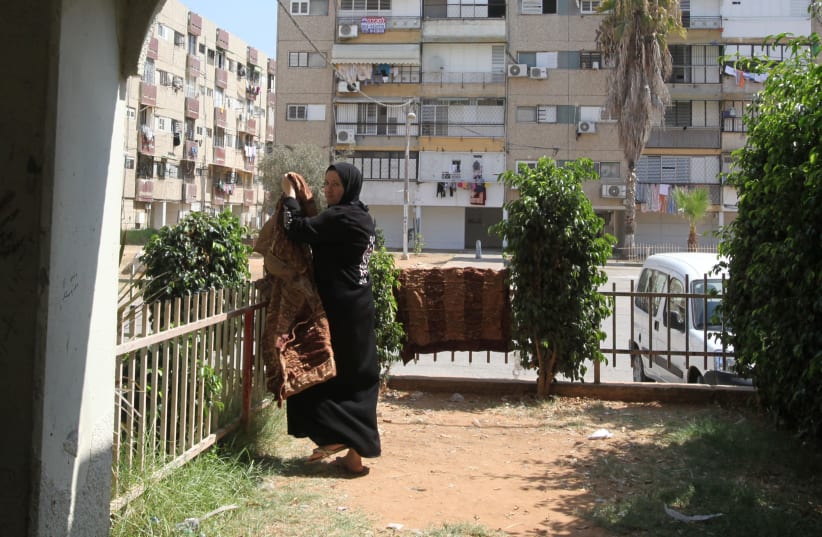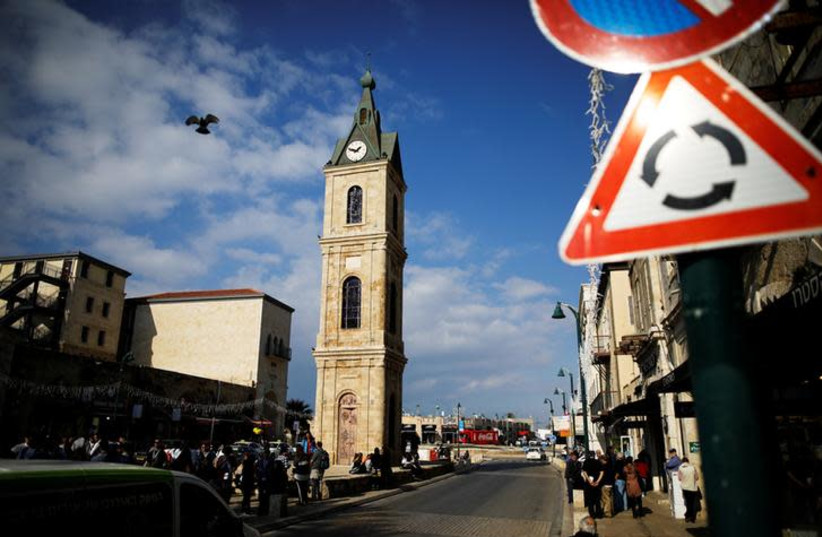Arab residents of mixed cities are heavily disadvantaged compared to their Jewish neighbors, according to a new report published by the State Comptroller on Wednesday.
The report was published in two parts with one part dealing with the police's conduct during Operation Guardian of the Walls and the second part dealing with municipal services for Arab residents in mixed cities.
According to the Central Bureau of Statistics, a mixed locality is one in which a significant majority of Jewish residents live alongside a significant minority of Arab residents. There are nine such localities in Israel: Jerusalem, Tel Aviv-Jaffa, Haifa, Acre, Ramle, Lod, Ma'alot-Tarshiha, Nof HaGalil and Neve Shalom. About 1,970,000 residents live in these localities, including about 500,000 Arabs.
The report examined municipal services for Arab residents of Haifa, Lod, Nof HaGalil, Acre and Ramla. The population of Haifa is 12% Arab, while in Lod 29.8% are Arab, in Nof HaGalil 30.4% are Arab, in Acre 32.7% are Arab and in Ramla 24.3% are Arab.
The comptroller found that there is a lack of government budgets for mixed cities, a lack of Arab representation among senior officials in municipalities and discrimination in the public property allocated in mixed cities and the proportion of the support budget of the municipalities allocated to the local Arab population.
Of the government decisions made to improve the state of the Arab sector between 2010 to 2020, with the exception of specific decisions regarding the Arab population in Jerusalem, they do not apply to Arab residents of mixed cities. This means that Arab residents in these localities did not receive dedicated budgets, treatment or systematic policy.
The first government decision referencing mixed cities was issued last year and included a budget for mixed cities.
In the mixed cities, the proportion of senior Arab employees is small compared to their share in the city's population, making up just 7.7% of employees in Haifa, 1% of workers in Lod, 5% of workers in Nof HaGalil, 9% in Acre and 1.5% in Tel Aviv-Jaffa. In Ramla there are no senior Arab employees at all.
Arabs also make up a smaller proportion of committee members in the municipalities of mixed cities compared to their proportion in the city's population. The lack was especially notable in the Support and Allocations Committees, according to the report.
In Haifa, Nof HaGalil, Acre and Ramla, less than 6% of the support budget was given to the Arab sector. The comptroller report stressed that the mixed cities "did not examine the needs of the Arab population living in their area, including in matters of religion, welfare, youth and culture."
Out of 500 properties allocated in the mixed cities, only five were allocated to entities belonging to the Arab sector. In Nof HaGalil and Acre, no properties were allocated to entities from the Arab sector.
The report also found that the Education Ministry was allocating more of a budget per student in Hebrew educational institutions in mixed cities than to Arab educational institutions, with the gap reaching as high as a 22% in Ramla. Disparities were also found in the rate of students eligible for matriculation and in the rate of those eligible for matriculation in the highest level of math studies.
The websites of the Haifa, Lod, Nof HaGalil and Acre municipalities have not been made accessible in the Arabic language. Haifa, Lod, Acre and Ramla also do not have a phone menu in Arabic on their municipal hotlines. In Nof HaGalil there are municipal signs without Arabic writing. The percentage of Arabic-language books in municipal libraries in these cities is small compared to the size of the Arab population in each city.
The comptroller did note, however that the proportion of Arab workers in Haifa and Tel Aviv-Jaffa is greater than their proportion among the cities' populations. The Tel Aviv municipality also promotes activities encouraging occupational diversity and the integration of Arab workers.
Haifa, Acre and Tel Aviv-Jaffa also have initiated many joint activities between Jewish and Arab students and youth and there are state bilingual schools in Haifa and Tel Aviv-Jaffa.
The comptroller stressed that the report points to gaps between the municipal services received by the Jewish residents and the municipal services received by the Arab residents in the mixed cities. The comptroller recommended that operative steps be taken within the framework of the multi-year plan for mixed localities to reduce these gaps.
He also recommended that the cities involved examine the municipal services they provide and work to provide a tailored response to all population sectors. "All local authorities must learn from the findings of this report, especially in view of the demographic changes expected to occur in the coming years in the composition of the population in various local authorities, and adapt their services to the emerging population mix," said the comptroller.
Police's failures and social inequality 'two sides of the same coin'
The NGO Abraham Initiatives stressed that the part of the report dealing with the police's handling of the riots and a second part released in parallel concerning municipal services in mixed cities are "two sides of the same coin."
"As those who are intimately familiar with the reality in the mixed cities, we saw the gaps with our own eyes.
The Abraham Initiatives stressed that the situation of Arab residents in mixed cities is "immeasurably worse" than the situation of Jewish residents, adding that this may explain part of the causes of the severe tensions that erupted in the riots in May 2021. The NGO emphasized that national tension and the feeling of alienation of Arab citizens from the state may also be a factor in the tensions.
"The state must also pay attention to this matter, and we reinforce the state comptroller's position that action must be taken to create a sense of belonging for the Palestinian citizens to the state," said the NGO.
The failure of police to respond to the basic needs of Arab residents of mixed cities creates a "deep feeling of deprivation and alienation from the city" and their inability to respond during the riots deepened these feelings, leading them to "seek to take the law into their hands."
The Abraham Initiatives called for the state to invest in police and for police to work intelligently and hand-in-hand with the communities in mixed cities. The organization added that further investments must be made to address severe gaps in mixed cities.

